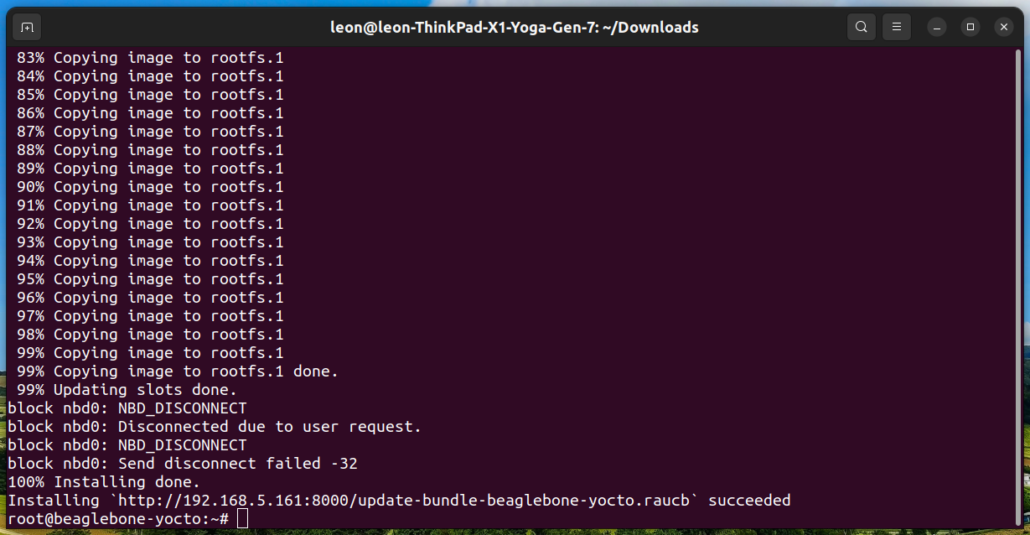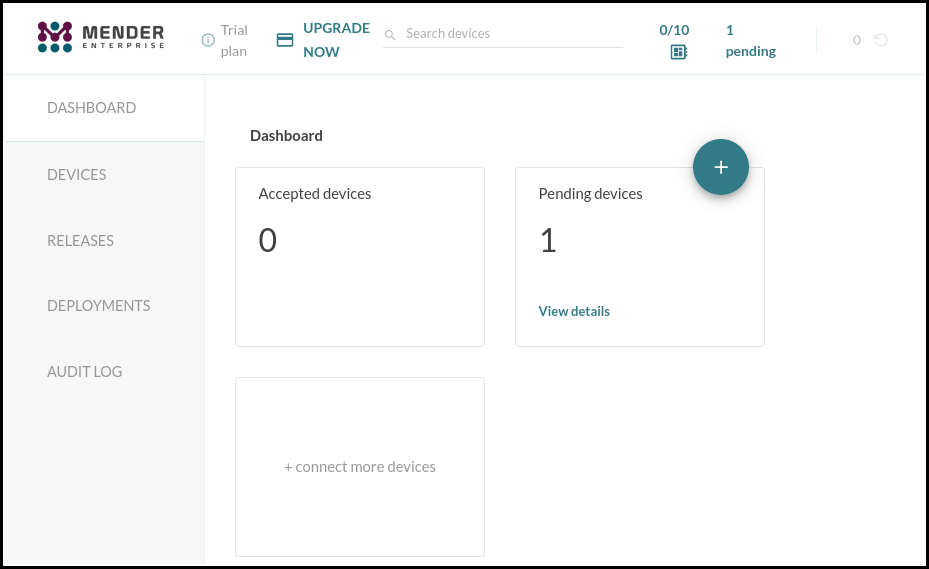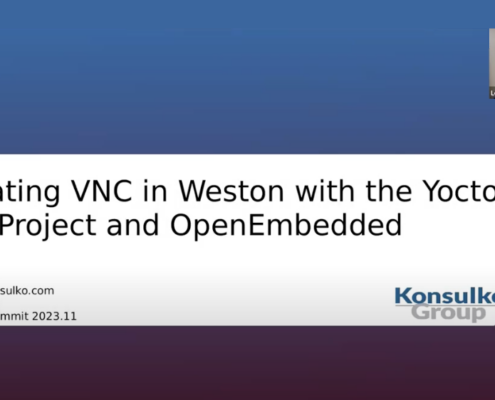IMA-measurement with Yocto Project and OpenEmbedded
Integrity Measurement Architecture (IMA-measurement) is a subsystem in the Linux kernel designed to provide a framework for maintaining the integrity of files on a system. The primary purpose of IMA is to ensure that only trusted code and data are executed on a system and that the integrity of critical system components is maintained.
IMA was merged into the mainline Linux kernel in 2004 with the release of version 2.6.30. It evolved over time, adding features such as TPM integration, extended support, and continued maintenance, becoming a key component for ensuring the integrity of files in Linux-based systems. IMA works by calculating cryptographic hashes of files at various points in their lifecycle, such as when they are accessed, executed, or modified.
This article shares the exacts steps to build a minimal Linux distribution with IMA support for QEMU x86-64 using the Yocto Project and OpenEmbedded. The Yocto Project is an open-source collaboration project that enables developers to create lightweight, optimized, and customizable Linux distributions for embedded devices while maintaining control over the software components and configurations included in the system. To enable IMA, we use Yocto/OpenEmbedded layers meta-security and meta-integrity. These layers offer a comprehensive suite of security tools and hardening utilities designed for Linux kernels, along with libraries that facilitate the implementation of robust security mechanisms.
Building a Linux Distribution with IMA
Recently Leon Anavi, Konsulko Group Senior Engineer, contributed a couple of patches to the upstream of meta-security/meta-integrity to simplify using integrity-image-minimal. This is a small image provided as an example to demonstrate IMA support.
The following steps outline the process of building an image with Integrity Measurement Architecture (IMA) using the Yocto Project and OpenEmbedded. This demonstration uses the default debug keys provided in the “data” directory of layer meta-integrity. Because everyone has access to these private keys, for devices in production you must create your own private keys and use them instead. Enabling the audit kernel subsystem provides additional informational integrity auditing messages useful for debugging any appraisal issues that may arise during the development process.
Kindly be aware that this article utilizes source code derived from the primary branches of associated Yocto/OE layers. Consequently, we are selecting specific git commits that have been confirmed to function reliably. These commits will be part of the next long-term support (LTS) release of the Yocto Project which is version 5.0 with codename Scarthgap. It is scheduled for release in April 2024 and will be supported for 4 years until April 2028.
- Download the source code:
git clone git://git.yoctoproject.org/poky poky-qemu
cd poky-qemu
git checkout e31be0b0e6ed6855787ebfbacc15bdbf1b9e511c
git clone git://git.yoctoproject.org/meta-security
cd meta-security
git checkout 30e755c59204cbd64c3aa12e64ab33041f6f02c0q
git clone git://git.openembedded.org/meta-openembedded
cd meta-openembedded
git checkout 57db42741df341718b9bb4b1b8f20d2e2fcf7010
- Initialize the built envieronment:
source oe-init-build-env
- Include additional layers:
bitbake-layers add-layer ../meta-openembedded/meta-oe
bitbake-layers add-layer ../meta-security
bitbake-layers add-layer ../meta-security/meta-integrity
- Append the following configurations to
conf/local.conf:
DISTRO_FEATURES:append = " integrity ima"
IMAGE_CLASSES += "ima-evm-rootfs"
IMA_EVM_KEY_DIR = "${INTEGRITY_BASE}/data/debug-keys"
IMA_EVM_PRIVKEY = "${IMA_EVM_KEY_DIR}/privkey_ima.pem"
IMA_EVM_X509 = "${IMA_EVM_KEY_DIR}/x509_ima.der"
IMA_EVM_ROOT_CA = "${IMA_EVM_KEY_DIR}/ima-local-ca.pem"
IMA_EVM_POLICY = "${INTEGRITY_BASE}/recipes-security/ima_policy_hashed/files/ima_policy_hashed"
SRC_URI:append:pn-linux-yocto = " file://audit.cfg"
CORE_IMAGE_EXTRA_INSTALL += "auditd"
QB_KERNEL_CMDLINE_APPEND:remove:pn-integrity-image-minimal = "ima_policy=tcb ima_appraise=fix"
QB_KERNEL_CMDLINE_APPEND:append:pn-integrity-image-minimal = " ima_appraise=log ima_appraise_tcb integrity_audit=1"
- Built an image with IMA for QEMU x86-64:
bitbake integrity-image-minimal
Testing IMA
After building the image, we can launch it. QEMU, short for Quick Emulator, is an open-source virtualization software that allows users to emulate various hardware platforms and run operating systems on different host systems. We will use it to run and test the image. By utilizing the “nographic” option, QEMU disables the video console, setting the console to “ttys0”. This feature is particularly beneficial when remotely accessing a build server over SSH. To verify the effectiveness of the appraisal process, attempt modifying a file, then confirm that the verification of the altered file subsequently fails.
- Launch the image in QEMU:
runqemu nographic
- Login and root and verify the integrity of file
/etc/hostnameusingevmctl:
evmctl ima_verify /etc/hostname
The expected output should resemble:
Poky (Yocto Project Reference Distro) 4.3+snapshot-e31be0b0e6ed6855787ebfbacc15bdbf1b9e511c qemux86-64 /dev/ttyS0
qemux86-64 login: root
root@qemux86-64:~# evmctl ima_verify /etc/hostname
key 1: 6730eefd /etc/keys/x509_evm.der
/etc/hostname: verification is OK
- Modify
/etc/hostname:
echo test > /etc/hostname
- Verify the integrity of file
/etc/hostnameagain:
evmctl ima_verify /etc/hostname
Now the verification fails because the file has been modified. The anticipated output should be similar to:
root@qemux86-64:~# echo test > /etc/hostname
root@qemux86-64:~# evmctl ima_verify /etc/hostname
key 1: 6730eefd /etc/keys/x509_evm.der
/etc/hostname: verification failed: 0 ((null))
This simple example serves as a demonstration of how Linux IMA operates, using QEMU as a platform. However, to implement Linux IMA on real-world devices, Konsulko Group offers assistance with hardware bring-up and integration of the suitable Yocto/OE BSP (Board Support Package) layers.
Since the inception of OpenEmbedded and the Yocto Project, Konsulko engineers have actively contributed to the community and provided guidance for developing commercial products. We specialize in U-Boot, Linux kernel, RAUC, Mender, and various other open source projects for embedded Linux devices. Contact us to explore how Konsulko engineers can assist with your embedded product development endeavors.



























